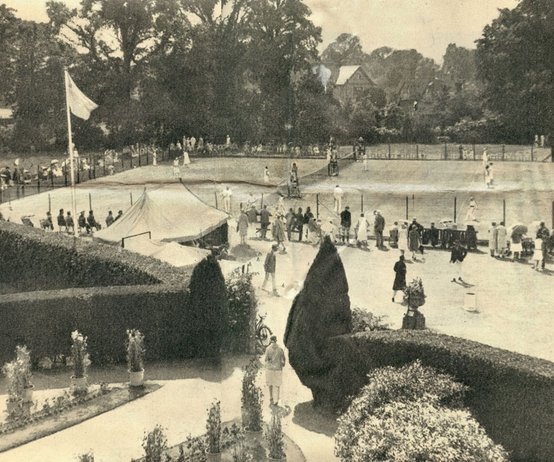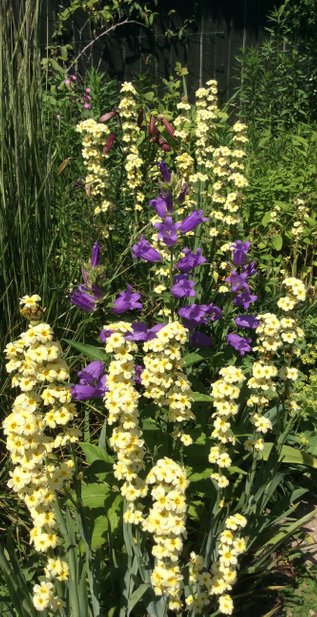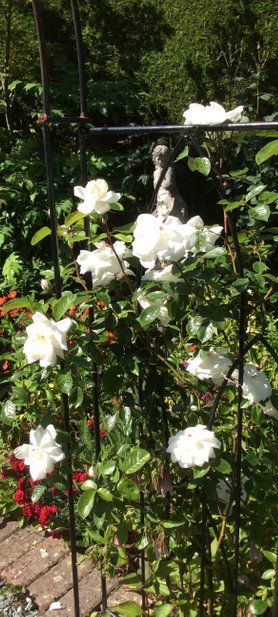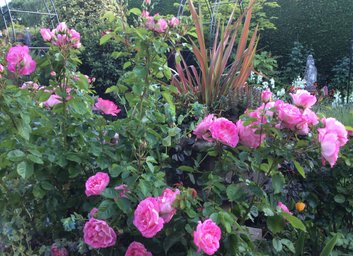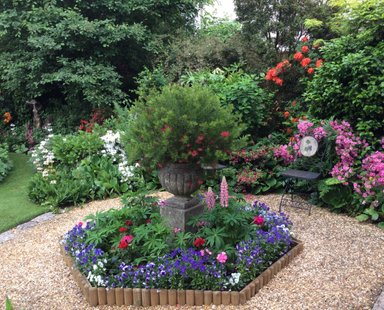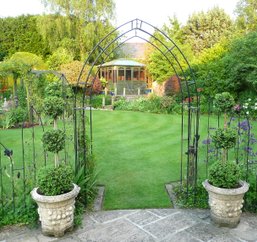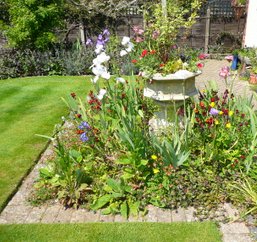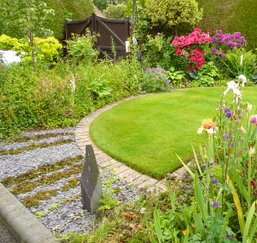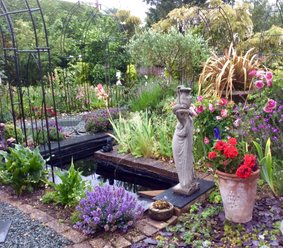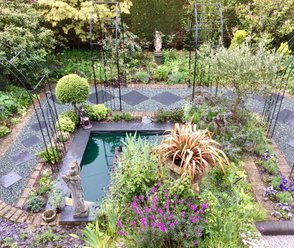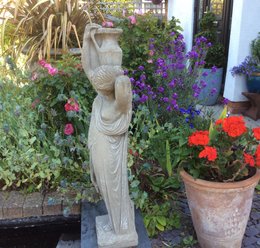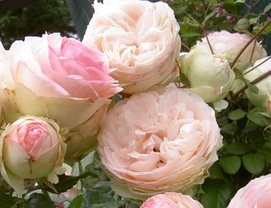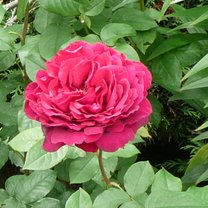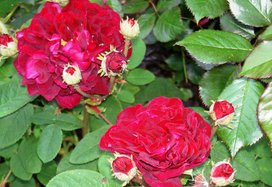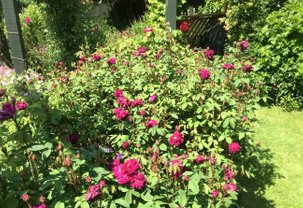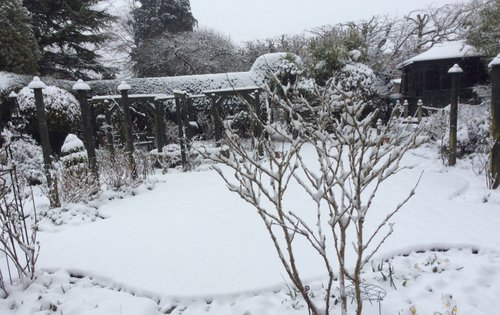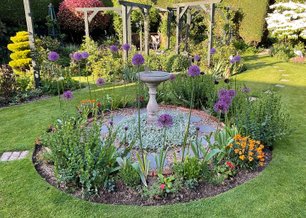21 Chestnut Road, A garden for all seasons.
ABOUT US AND HOW IT ALL STARTED
How it all began.
Before Chestnut Road was developed it formed part of the Morrant Hall tennis courts, this picture shows how it would have looked c.1935. At that time it was as important as Wimbledon is today, with 17 courts both grass and hard and also indoor squash courts with a magnificent hall and stage, plus a large refreshment area. People would arrive by train from London for the week long tournaments. Unfortunately, as was the demise of many other large estates, the second world war and the lack of upkeep saw it decay and it was finally sold.
In the late 1950's early 1960 the whole site was split into building plots and developed. It was then that Iain bought the plot and built the house and established the boundary hedges. The beach hedge at the bottom of the garden has still got the remains of the tennis court boundary fence in it.
As tennis courts you may believe that we had a head start with the lawns, but nothing is farther from the truth. The whole area is very compacted with the remains of old cinder pathes and odd bits of iron work, broken crockery and old land drain.
We have lots to offer which we hope will help to inspire you as you explore the different styles and ideas we offer. Please enjoy looking at our garden, in the heart of the New Forest National Park, in Brockenhurst.
In the early development of the garden there were a lot of lawned areas but as time progressed and in 2012 the lawns were being replaced with hard landscaping features. Today in 2023 there is in fact even less lawn, with no lawn at all in the front garden, as can be seen here.
There are many features to be found around the garden, including this old grinding stone.
There are over 50 roses throughtout the garden, most are highly scented, like 'Charles de Mille'
Colour, form and scent play an important part to the design of the garden.
In June the scent from the roses add atmosphere. Another important factor as far as plannting is concerned is to consider bee and butterfly frendly plants. we try to grow nectar rich plants for as long a season as possible, from bulbs, like crocus in January right throught to Asters in late October and ivy in winter. With this in mind roses fill
an important part throughout the summer months.
The garden has been created with passion and we have been working on it since 2002. Each year we have aimed to give our visitors something new to experience. It could be a new area designed and developed, or an older area replanted and regenerated. Because there are various growing conditions around the garden, we hope to show how they can be managed and aim to give food for thought when dealing with similar conditions. Structures place an important part and allow us to grow clamtis and roses to extend the season and also give interest in winter.
